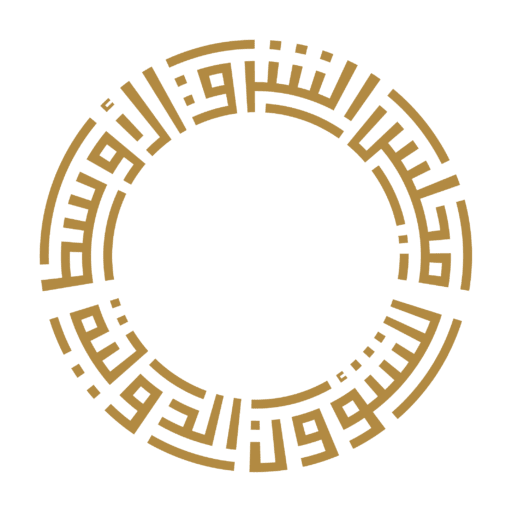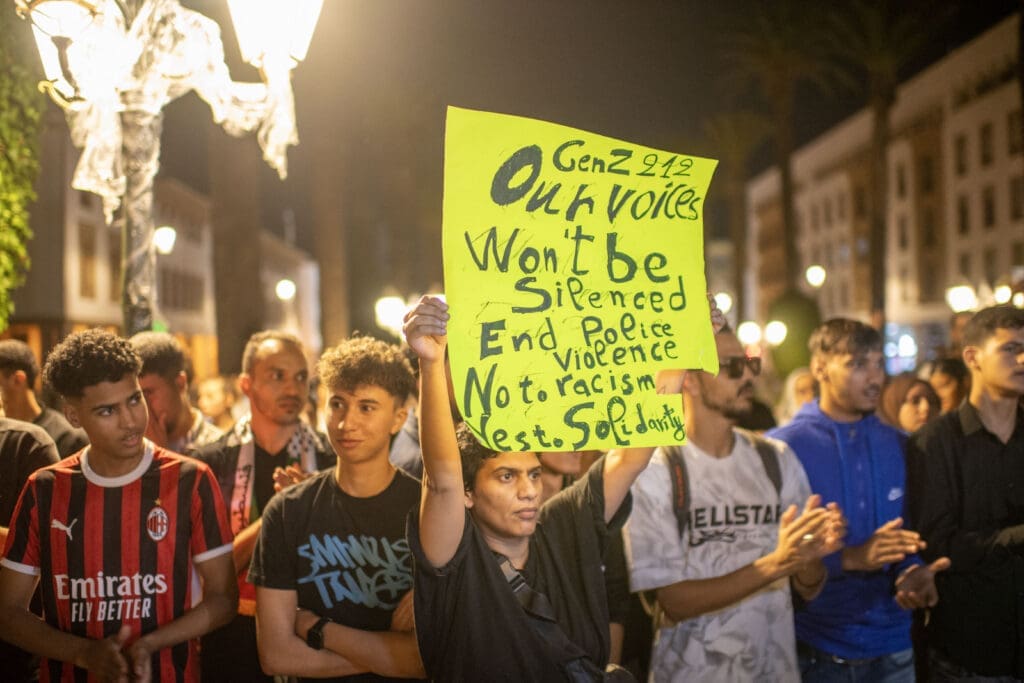On September 27, thousands of young Moroccans took to the streets to denounce years of poor governance and misplaced spending priorities. The demonstrations, organized by a collective called “GenZ 212,” have spread to at least 10 cities and quickly become the largest anti-government movement since the Rif protests of 2016-2017. Fueled by anger over the billions of dirhams allocated to new stadiums for the 2025 Africa Cup of Nations and the 2030 World Cup, while hospitals and schools remain chronically underfunded, the movement has struck a chord across the country.
The protests, sparked by reports that eight pregnant women had died in a provincial hospital due to medical negligence and a lack of basic equipment, speak to deeper frustrations among Moroccan youth. Living costs have been rising for years, jobs are scarce, and inequality is widening, with many among the public feeling the social contract no longer works for them. With few formal avenues for dissent, young Moroccans have turned to social media to mobilize around issues that symbolize inequality and neglect. Demonstrators chanting “silmiyya,” or peaceful, were met with a heavy police presence that later turned to violence, leaving three people dead and dozens injured, with hundreds more arrested. Banks and administrative buildings were vandalized, vehicles set on fire and security forces targeted with stones and Molotov cocktails. GenZ 212 has emphasized that it does not condone violence, insisting its dispute lies with the government rather than the police. The escalation reflects the depth of young Moroccans’ anger and the narrowness of Morocco’s space for political expression.
A system Losing Its Balance
Morocco’s political system has been sustained on a carefully managed, two-layered model. On one side, the royal establishment, known as the Makhzen, controls major strategic areas such as foreign policy and flagship national projects, with the king exercising religious authority. On the other, elected governments take responsibility for delivering services and handling the economy. This arrangement has allowed the monarchy to preserve its image as the country’s ultimate guarantor of stability, while politicians absorb public anger toward the state. The widespread protests have now put this arrangement to the test.
Prime Minister Aziz Akhannouch, a billionaire businessman and one of Morocco’s wealthiest men, has become a focal point for public frustration. Critics see his government as detached from ordinary citizens, and accusations of corruption and nepotism have further tarnished its image. Yet the symbolism of the World Cup and other palace-backed mega-projects has blurred the line that long separated government accountability from royal authority.
Misplaced Priorities and Waning Trust
For Morocco’s leadership, hosting the World Cup was meant to showcase the country’s emergence as a global player. For many young Moroccans, however, it has become a symbol of misaligned priorities, proof that prestige abroad is being pursued at the expense of dignity and opportunity at home. The movement has rallied around the slogan: “Stadiums are here, but where are the hospitals?” Morocco’s health system suffers from chronic shortages of staff and equipment. In 2023, the country had only 7.8 doctors for every 10,000 citizens, less than a third of what the World Health Organization considers adequate. Families struggle with an education system marked by inequality between private and public schools.
These weaknesses have been on display for years, but the gap between grandiose projects and basic services has made them harder to accept. Beneath the anger lies a broader sense of economic disillusionment. Youth unemployment stands at 35.8 percent, according to official figures, among the highest in North Africa. Even university graduates face joblessness rates close to one in five, reinforcing the belief among young people that hard work and education no longer guarantee a stable future. When protestors invoke the World Cup, they are indirectly questioning the very priorities that have underpinned Morocco’s modernization narrative.
The risk is not that the monarchy itself will be directly challenged. Its authority and symbolic role remain largely intact. What is at stake is the credibility of the political formula that shields it from popular anger. As frustrations mount, the elected government may no longer be able to act as a buffer in the same way it once did. Faced with high unemployment and failing public services, many young Moroccans now regard the divide between the government and the Makhzen as largely nominal.
Morocco’s Next Political Test
The authorities will likely continue to rely on the familiar approach: containing protests through security measures while allowing the elected government to bear the brunt of public criticism. The king’s recent call for reform signals an effort to set the agenda and steer public frustration away from the government. Akhannouch’s popularity has already suffered, and his party may very well pay the price in the 2026 elections. In that sense, the system may still succeed in deflecting anger away from the monarchy and resetting itself through an electoral turnover.
The deeper question is whether Morocco’s traditional way of managing dissent can still work with a generation that no longer plays by the same rules, a generation that is digitally connected, politically aware and less deferential to traditional boundaries. GenZ 212’s name, a reference to Morocco’s international dialing code, is an echo of similar youth protest movements as far away as Peru and Nepal, where youth led demonstrations brought down a government in the latter. The Moroccan activists’ use of platforms like TikTok, Instagram and Discord has allowed them to coordinate without the need for unions or civil society groups. That makes their mobilization more difficult to contain and less predictable than previous protest movements, such as the Rif demonstrations in 2016 and 2017, which were regional in nature and had clear figureheads, many of whom were jailed and silenced. At the same time, the decentralized nature of the current protests may prove detrimental to the movement, as it could limit its ability to sustain momentum or translate anger into concrete change, as seen in Algeria’s 2019 Hirak movement.
As the protests continue, it is too early to know whether they will fade, escalate or settle into a new rhythm of dissent. What is already clear is that they have exposed the fragility of Morocco’s long-standing political formula. Even if this movement loses momentum, the structural problems underlying it will not disappear. Uneven development, underfunded services, high youth unemployment and growing distrust in political institutions remain part of everyday life. While some may dismiss the movement as a fleeting expression of online activism, it marks a significant moment in Morocco’s political trajectory. The monarchy’s call for reform may signal awareness of public anger, but it is unlikely to contain it for long. Ultimately, the demonstrations should be seen less as a rupture and more as a warning. Morocco’s system has dealt with unrest before, but each cycle leaves a younger generation increasingly doubtful of the old boundaries between the government and the palace. Morocco’s future stability may depend less on stadiums and mega-projects, and more on whether its young citizens believe the system still works for them.


